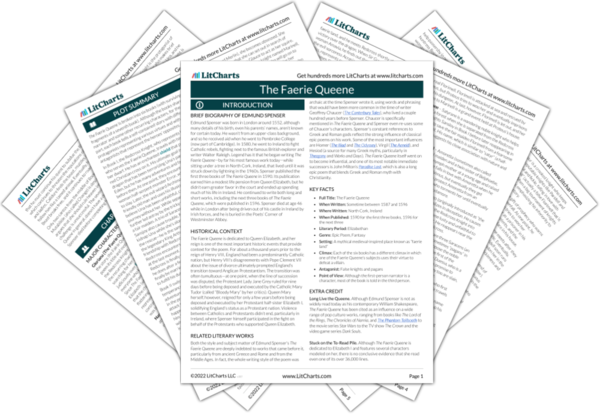Trips to the underworld are relatively common in mythological stories, and this won’t be the last one in this poem. The characters who appear in this section are familiar to people who know Greek and Roman stories about the underworld. Spenser often combines new elements of his poem with references to past epic poems with which his readership would have been broadly familiar, thereby placing himself within the same literary tradition.
